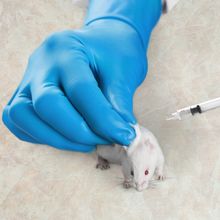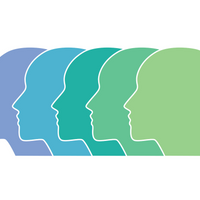Login
Subscribereplication

Sex of Researcher Influences Ketamine’s Effects in Mice: Study
Shawna Williams | Sep 8, 2022 | 3 min read
The findings likely have implications for animal research far beyond the study of antidepressants.

How a Bacterium Manages to Reproduce During Famine
Viviane Callier | Jul 18, 2022 | 3 min read
When Caulobacter crescentus finds itself in a nutrient-poor environment, it clusters an enzyme necessary for cell division thanks to a physical phenomenon known as phase separation so it can make better use of dwindling fuel.

Infographic: Nutrient Scarcity Drives Phase Separation in Bacteria
Viviane Callier | Jul 18, 2022 | 1 min read
When the bacterium Caulobacter crescentus runs low on fuel, it can still replicate by clustering its remaining ATP around the cell division enzyme DivJ.

Eight Weeks of Meditation Doesn’t Change the Brain, Study Finds
Natalia Mesa, PhD | May 20, 2022 | 4 min read
Study finds that, contrary to what other research has found, a popular meditation course does not appear to alter brain structure.

Study Finds Reproducibility Issues in High-Impact Cancer Papers
Catherine Offord | Dec 7, 2021 | 7 min read
Researchers involved in an eight-year project to reproduce the findings of more than 50 high-impact papers struggled to get enough information to even carry out most of the experiments.

“Xenobot” Living Robots Can Reproduce
Chloe Tenn | Dec 2, 2021 | 2 min read
Biological robots made from frog cells can replicate by smooshing loose cells into new robots—a reproduction method not seen in any other organism.

When Researchers Sound the Alarm on Problematic Papers
Shawna Williams | Sep 1, 2021 | 10+ min read
Finding and reporting an irregularity in a published study can lead people down an unexpected path.

How Scientists Are Tackling Brain Imaging’s Replication Problem
Angie Voyles Askham, Spectrum | Jul 9, 2021 | 6 min read
Researchers who spoke with Spectrum say that while brain imaging tools have their limitations, they still hold promise in helping to unlock the brain’s secrets.

What’s the Deal with Bacterial Nanotubes?
Sruthi S. Balakrishnan | Jun 1, 2021 | 10+ min read
Several labs have reported the formation of bacterial nanotubes under different, often contrasting conditions. What are these structures and why are they so hard to reproduce?

Infographic: Sources of Variation in Bacterial Nanotube Studies
Sruthi S. Balakrishnan | Jun 1, 2021 | 2 min read
Differences in how researchers prepare and image samples can lead to discrepancies in their results.

Human Cells Can Synthesize DNA in Their Cytoplasm
Alejandra Manjarrez, PhD | Feb 8, 2021 | 4 min read
While studying a degenerative eye disease, researchers find the first evidence that cells produce endogenous DNA in the cytoplasm. Drugs that block this activity are linked with reduced risk of atrophic age-related macular degeneration.

Gene Splicing Pioneer Dale Kaiser Dies
Ashley Yeager | Jun 29, 2020 | 5 min read
Working with a virus that infects bacteria, the Stanford University biochemist and developmental biologist helped to develop a way to stitch DNA together, a discovery that gave rise to genetic engineering.

Image of the Day: Coronavirus in 3D
Amy Schleunes | Mar 25, 2020 | 1 min read
At Bessy II, a synchrotron radiation facility in Berlin, scientists use X-rays to study the structure of SARS-CoV-2.

DNA Damage Linked to Brain Overgrowth in Autism
Abby Olena, PhD | Feb 5, 2020 | 4 min read
Cell lines from individuals with macrocephalic autism spectrum disorder have an increased number of double-strand breaks in the DNA of long neural genes.

Study Refutes Findings that Acidification Affects Fish Behavior
Emma Yasinski | Jan 8, 2020 | 4 min read
The new experiments use standardized methods and video recordings, but some researchers stand by earlier evidence that ocean pH influences coral reef fish’s response to predator cues.

Image of the Day: Fractal Formation
Emily Makowski | Nov 4, 2019 | 1 min read
A mixture of chemicals induces reactions reminiscent of life on pyrite.

Replication Refutes Study Linking Neuroimaging to Genetics
Emma Yasinski | Sep 30, 2019 | 3 min read
The original experiment found brain activity as measured by fMRI was tied to particular genetic variants.

Two Studies Fail to Replicate Magnetogenetics Research
Katarina Zimmer | Sep 20, 2019 | 9 min read
The new work calls into question the idea that neurons can be genetically engineered to fire in response to magnetic fields, a setback for the budding technique.

Half the Time, Psychology Results Not Reproducible: Study
Ashley P. Taylor | Nov 20, 2018 | 2 min read
These failures were not due to differences among sample populations.
